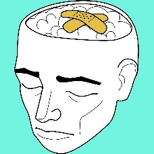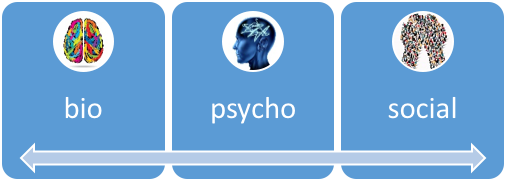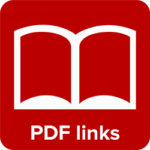Module 13: OTC and Rx Abuse and Pharmacotherapy and Detox
Ch. 2: Pharmacotherapy
This chapter explores the use of medications in the treatment of substance use disorders. There are two general labels for this kind of strategy: pharmacotherapy or medication assisted treatment (MAT). At this point, you will read a piece by Miller, Forcehimes, and Zweben (2011) entitled “Pharmacological adjuncts” from the book they published called Treating addiction: A guide for professionals.
In this chapter you will read about:
- Medications for drug withdrawal and maintenance (nicotine substitution, methadone, buprenorphine, naltrexone, disulfiram, acamprosate, topirimate)
- Combining medication with behavioral interventions
- Key terms related to pharmacotherapy.
 As you read the chapter contents, consider several things. First, on the surface, it might seem a bit paradoxical to treat a drug problem with drugs. The strategy is not without controversy, particularly among practitioners who themselves have managed to overcome a substance use disorder without medication. Underlying many programs is a philosophy of total abstinence from all types of psychotropic substances, including medications prescribed in pharmacotherapy. However, there exists a sizable (and growing) literature supporting the use of certain medications to facilitate treatment of substance use disorders. The underlying assumption is that substance use disorders and addiction are diseases of the brain and brain chemistry, therefore attacking those brain chemistry mechanisms is a reasonable approach to treatment.
As you read the chapter contents, consider several things. First, on the surface, it might seem a bit paradoxical to treat a drug problem with drugs. The strategy is not without controversy, particularly among practitioners who themselves have managed to overcome a substance use disorder without medication. Underlying many programs is a philosophy of total abstinence from all types of psychotropic substances, including medications prescribed in pharmacotherapy. However, there exists a sizable (and growing) literature supporting the use of certain medications to facilitate treatment of substance use disorders. The underlying assumption is that substance use disorders and addiction are diseases of the brain and brain chemistry, therefore attacking those brain chemistry mechanisms is a reasonable approach to treatment.
Second, it is important to note that the evidence supports combining psychological, social, and biological approaches in combination—medications alone are not sufficient. Above, you read the phrase “supporting the use of certain medications to facilitate treatment.” In other words, medication alone is not sufficient treatment, which is why the concept of medication assisted treatment (MAT) is so important. This is the theme of the guidelines published by the Substance Abuse and Mental Health Services Administration (SAMHSA, 2016) for medication assisted treatment of opioid addiction. These guidelines indicate that the following steps are critical:
- Evaluate the need for medically managed withdrawal from the opioids (remember this topic was covered in Module 11).
- Addressing co-occurring problems (more about this in Module 14)
- Integrate pharmacologic and nonpharmacologic therapies—medications are a part of a comprehensive, individualized treatment plan that includes counseling and other psychosocial therapies and mutual-help programs.
This should remind you of our class emphasis on the biopsychosocial perspective on substance misuse and substance use disorders.

Third, the medications used to treat substance use disorders are not without side effects and risks themselves. This includes the fact that some treatment medications have addictive potential themselves (e.g., methadone). The hope is that these known risks can be managed more safely than occurs in the uncontrolled world of substance misuse, especially illicit substances, “street” drugs, drugs imported from other countries, and illicit use of prescription drugs.
In short, keep in mind that MAT, or pharmacotherapy, is a tool in the collection of options available for the treatment of substance use disorders. As we have learned throughout this course, no one-size-fits-all approach works for everyone. Treatment programs need to be tailored to individuals and their circumstances, and often need to be modified as a person’s circumstances change over time.

Click here for a link to our Carmen course where you can locate the assigned pdf file(s) for this chapter. You will need to be logged into our Carmen course, select Module 13, and proceed to the Coursework area. Under the Readings heading you will find a box with links to the readings for relevant coursebook chapters. Don’t forget to return here in your coursebook to complete the remaining chapters and interactive activities.
